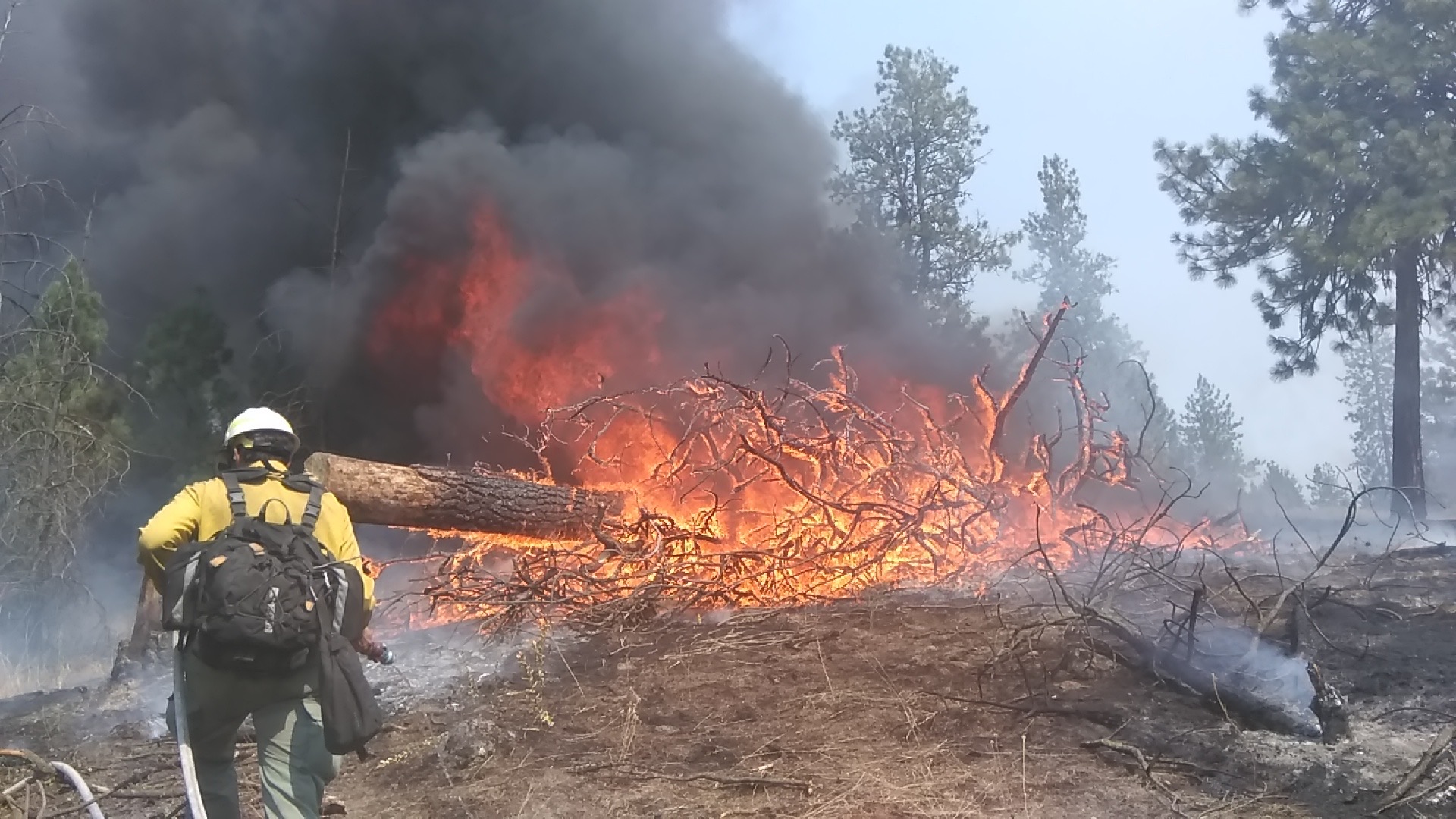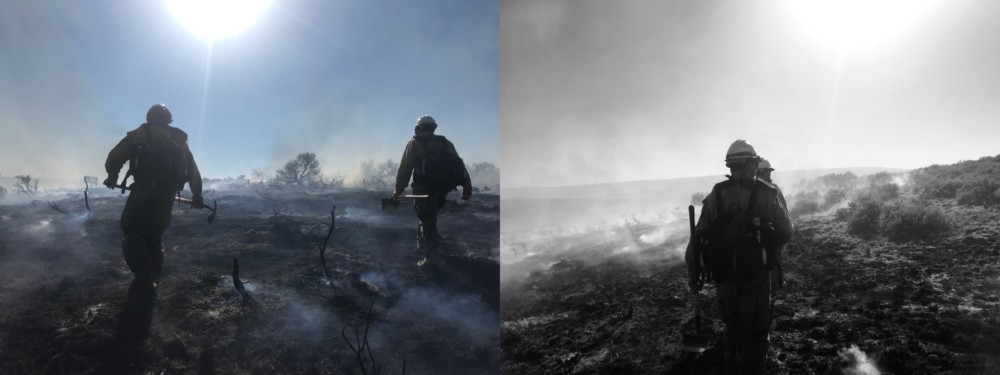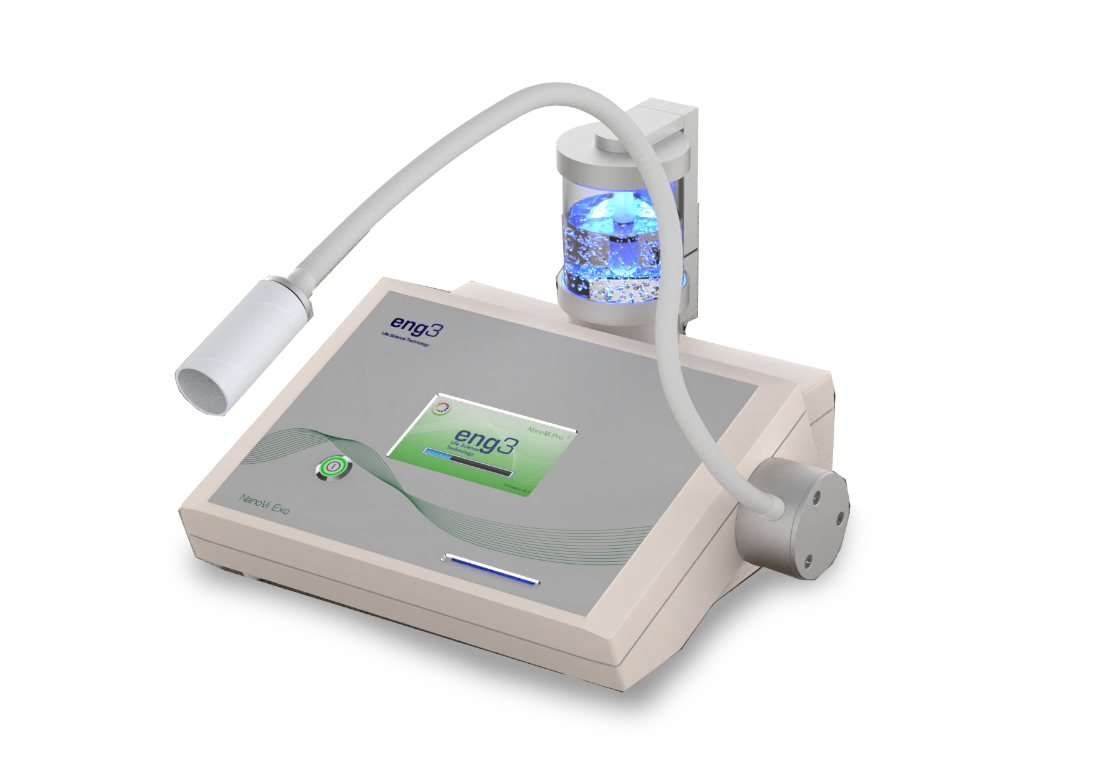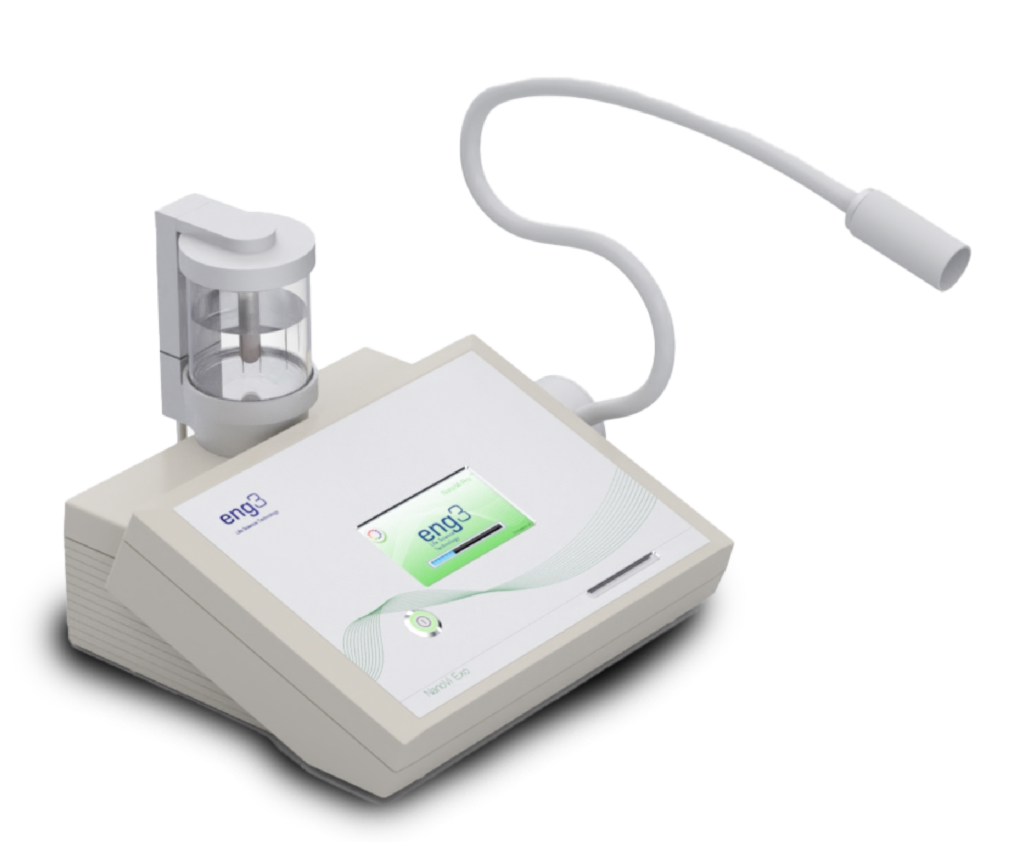Wildfires: a growing public health crisis involving oxidative stress damage caused by airborne particulates
Wildfires have been getting worse, and the trend is expected to continue. The incidences of (and total land area impacted by) wildfires have been increasing globally over the past 40 years, and fire weather conditions are expected to worsen continuously moving forward1. This sombre reality, paired with humanity’s increasing expansion into wilderness areas, has begun to overcome fire suppression capacity in many areas of the world.
At first when we think of wildfires, we think of towering flames and fast-moving brush fires, driven by a noisy wind, emitting an oily, orange glow. We look at the terrible displacement of people in the fires’ path, and the tragic loss of life that they too often leave in their destructive wake. There is, however, another mechanism by which wildfires impact the health and well-being of humans—one that is so dangerous precisely because it reaches far beyond the heat of the flames.

A firefighter rushes to put water onto a fallen tree that had recently ignited. Here, the combustive and smoke-producing potential of a single tree is demonstrated.
Wildfire damage extends well beyond the burn zone
It comes in the form of atmospheric particulate matter emitted by the wildfire—carried off by rising heat as a cloud of smoke. A majority of these particles are very small, known as PM2.5 (Particulate Matter smaller than 2.5 μm, only 5% the diameter of a human hair), which can linger in the air for weeks and travel extremely long distances2. This allows fire emissions to impact large urban areas hundreds of miles away from their source fire, greatly increasing human exposure to damaging particulate matter.

The skyline of Seattle, Washington, on a typical day and on a day when wildfire smoke from British Colombia, Canada filled the air with damaging particles.
Several large-scale studies have reported the serious impacts of wildfire smoke exposure on human health. It has been observed to increase overall mortality rates as well as sickness due to respiratory illnesses, especially for individuals with chronic respiratory diseases, pregnant women and their fetuses, children, and middle-aged or older adults3. Hospital admissions for patients in respiratory distress increase significantly during smoke waves—particularly for older individuals4. In fact, out of 45 studies investigating the connection between wildfire smoke and respiratory health, more than 90% found a strong and significant increase of respiratory illness upon exposure to wildfire particulates5.
What makes wildfire particulate special?
What about wildfire smoke causes illness? The answer is multifaceted, complex, and remains an area of active research. There is, however, much that is already known. The fact that a majority of airborne particulates emitted by wildfires are PM2.5 not only increases the longevity and range of the particles in the air, but also the damage they can do to humans when inhaled. Because they are so small, PM2.5 penetrate and work their way much deeper into the respiratory tract, where they inflame and break down the fragile lining of the lungs6. Moreover, the chemical composition of particles released from wildfires appears to be more harmful than other particles of the same size. In fact, the risk of emergency hospitalization for both respiratory and cardiovascular illnesses is more strongly associated with carbon-based PM2.5—the type most commonly emitted by wildfires2—than to any other type of equally-sized particle yet measured7.
Why is wildfire smoke so bad for humans?
One explanation for the particular toxicity of wildfire smoke to humans involves its ability to induce oxidative stress in our bodies. This process requires the particulate matter entering our lungs to generate reactive oxygen species (ROS) which then damage and stress our cells. Researchers have shown that small particles possess this potential to create oxidative stress, and that this potential is higher in smoke with smaller particle size and a higher abundance of carbon-based particles8—a near-perfect description of the composition of wildfire emissions. Indeed, smoke samples collected from wildfires in Southern California possess a measurable potential to create oxidative stress9, and studies in rats exposed to wood smoke have demonstrated a clear ability of fire emissions to induce oxidative stress in the lungs following inhalation10.
In moderation, production of ROS is highly manageable for our cells and is in fact a normal consequence of our cells’ using oxygen to make energy. ROS are even an important part of our immune system, tools which immune cells use to kill invaders such as bacteria and signal to one another11. When excessive, however, oxidative stress is highly damaging to our cells. ROS can damage our DNA—the genetic instruction manual which our cells rely on to function—and lead to the development of disease12. They also attack and unfold our proteins13, making them dysfunctional and unable to maintain the health of our cells, leading to cell impairment or cell death. Lost protein function can cause reduced performance, increased aging, and chronic diseases.
As expected, evidence consistent with oxidative stress damage following wildland smoke inhalation is present in the scientific literature. Wildland firefighters, who are exposed to extremely high levels of smoke inhalation, experience a large increase in their chance of dying from several illnesses14, both acute and chronic, linked to oxidative stress damage12,15. While the average person experiences far less exposure to wildfire smoke, these studies serve as a solemn indicator for the potential damage inherent to wildfire emissions.
Your immune system can be hit hard
Moreover, researchers have observed extreme sensitivity of lung macrophages—important cells of the immune system responsible for ‘eating’ invaders and coordinating the immune response—to wildfire smoke16,17. In such cases, oxidative stress has been identified as the major or sole contributor to the death of these important immune cells. This comes at a most inopportune time, as the inhaled smoke particles disrupt and break down the linings of the airway18 and expose the lungs to infection. Other features of dysregulated immunity have been experimentally observed, as well. Wood smoke exposure may increase allergic airway inflammation19, and infant rhesus macaque monkeys exposed to Southern California wildfires experienced several immune deficiencies later in life20.
The oxidative stress induced by wildfire smoke may also impact lung inflammation. Despite its bad reputation, inflammation is an important part of tissue and cellular repair, rushing blood and immune cells to the sites where they are needed most. This might be especially important, for example, as a way to replace dead macrophages killed by oxidative stress damage. Too much inflammation, however, can be extremely and permanently damaging to tissues—especially at delicate, mucosal surfaces like that of the lungs21. Moreover, it can block oxygen’s ability to diffuse into the bloodstream, reducing wellness and performance at the very least, and creating a potentially life-threatening condition at its worst. Inflammation, importantly, can be triggered not only by microbial invaders or physical trauma, but also by the immune system’s detection of damaged cells22. With this in mind, it is possible that wildfire PM2.5 leads to higher rates of acute respiratory illness compared to other PM2.5 because of the extra inflammation it initiates via oxidative damage to cells.
The bottom line on oxidative stress damage
In summary, wildfire PM2.5 induces inflammation and oxidative stress in our lungs which is capable of leading to respiratory illnesses, certain deficiencies of our immune system, decreased blood oxygenation, risk of acute and chronic illnesses, and tissue damage—and these are just the health impacts that we know of.

Two members of a fire crew patrol the smouldering remains of a fast-moving brush fire. Even hours after the fire had swept through, the ground is releasing damaging smoke particles.
Avoid wildfire smoke and repair the damage it causes
The most effective way to remain healthy during times of increased exposure to wildfire particulate matter is to remain indoors with a proper filtration system. Limiting contact to the damaging effects of a toxic pollutant will always be the best way of staying healthy. Everyday life often prevents this idealistic approach, however, and even the best protective systems are imperfect.
So, what can we do when exposure to wildfire smoke is unavoidable? We can help our bodies to fight back.
Fortunately, our bodies have natural mechanisms with which to combat oxidative stress. We have DNA repair proteins that help to patch up the damage caused by ROS, and enzymes designed to cope with oxidative stress in our system12. In response to damage to proteins, our cells deploy specific ‘chaperone’ proteins to help damaged proteins refold and prevent them from sticking together into harmful aggregates; our cells also ensure that irreversibly-damaged proteins are safely disposed of13. These responses are essential to returning our cells to a healthy state and saving them from damage or death.
How NanoVi® enhances the body’s repair
The NanoVi device works effectively to assist and enhance this natural repair system. The device induces the increased formation of exclusion zone (EZ) water within the cell, which is believed to be an essential component of the physical process of protein folding. This video walks you through the process. The result is an increased efficiency and reliability of proper protein folding. This effect, in turn, may directly recover damaged proteins that have been unfolded due to oxidative stress. Moreover, through the same mechanism of improved protein folding, NanoVi works to enhance the speed and effectiveness of those proteins involved in DNA and protein repair. The result is increased recovery and protection against oxidative damage caused by wildfire particulates, and potential reduction of the excessive inflammation within the lungs associated with reduced blood oxygenation and a higher incidence of respiratory disease.
By enhancing our bodies’ ability to repair and restore cellular function following oxidative damage, NanoVi can be an important tool for people exposed to wildfire particulate matter. Moreover, NanoVi’s effectiveness is delivered via a simple, convenient, and non-invasive inhalation delivery system. Whether used by an individual or shared by an entire team, NanoVi can deliver its benefits within just a 30-minute application.
If you’d like to learn more about the NanoVi device, its proven benefits, and the price, sign in below.
Eng3 will send you an email as soon as you submit the form, please check your spam filter if you don’t receive it. We only send study results and other valuable information. Your email will not be shared or flooded with promotional content.
References
1. de Groot, W. J., Flannigan, M. D. & Stocks, B. J. Climate Change and Wildfires. (2013).
2. Radke, Lawrence F; Hegg, Dean A; Hobbs, Peter V; Nance, J. David; Lyons, Jamie H; Laursen, Krista K; Weiss, Raymond E; Riggan, Phillip J; Ward, D. E. Particulate and trace gas emissions from large biomass fire in North America. (1991).
3. Cascio, W. E. Wildland fire smoke and human health. Sci. Total Environ. 624, 586–595 (2018).
4. Liu, J. C. et al. Wildfire-specific Fine Particulate Matter and Risk of Hospital Admissions in Urban and Rural Counties. Epidemiology 28, 77–85 (2017).
6. Xing, Y.-F., Xu, Y.-H., Shi, M.-H. & Lian, Y.-X. The impact of PM2.5 on the human respiratory system. J. Thorac. Dis. 8, E69–E74 (2016).
7. Peng, R. D. et al. Emergency admissions for cardiovascular and respiratory diseases and the chemical composition of fine particle air pollution. Environ. Health Perspect. 117, 957–963 (2009).
8. Cho, A. K. et al. Redox activity of airborne particulate matter at different sites in the Los Angeles Basin. Environ. Res. 99, 40–47 (2005).
9. Verma, V. et al. Physicochemical and Toxicological Profiles of Particulate Matter in Los Angeles during the October 2007 Southern California Wildfires. Environ. Sci. Technol. 43, 954–960 (2009).
10. Dubick, M. A., Carden, S. C., Jordan, B. S., Langlinais, P. C. & Mozingo, D. W. Indices of antioxidant status in rats subjected to wood smoke inhalation and/or thermal injury. Toxicology 176, 145–157 (2002).
11. Lam, G. Y., Huang, J. & Brumell, J. H. The many roles of NOX2 NADPH oxidase-derived ROS in immunity. Semin. Immunopathol. 32, 415–430 (2010).
12. Kryston, T. B., Georgiev, A. B., Pissis, P. & Georgakilas, A. G. Role of oxidative stress and DNA damage in human carcinogenesis. Mutat. Res. Mol. Mech. Mutagen. 711, 193–201 (2011).
13. Reichmann, D., Voth, W. & Jakob, U. Maintaining a Healthy Proteome during Oxidative Stress. Mol. Cell 69, 203–213 (2018).
14. Navarro, K. M. et al. Wildland firefighter smoke exposure and risk of lung cancer and cardiovascular disease mortality. Environ. Res. 173, 462–468 (2019).
15. Cervantes Gracia, K., Llanas-Cornejo, D. & Husi, H. CVD and Oxidative Stress. J. Clin. Med. 6, 22 (2017).
16. Williams, K. M., Franzi, L. M. & Last, J. A. Cell-specific oxidative stress and cytotoxicity after wildfire coarse particulate matter instillation into mouse lung. Toxicol. Appl. Pharmacol. 266, 48–55 (2013).
17. Franzi, L. M., Bratt, J. M., Williams, K. M. & Last, J. A. Why is particulate matter produced by wildfires toxic to lung macrophages? Toxicol. Appl. Pharmacol. 257, 182–188 (2011).
18. Roscioli, E. et al. Airway epithelial cells exposed to wildfire smoke extract exhibit dysregulated autophagy and barrier dysfunction consistent with COPD. Respir. Res. 19, 234 (2018).
19. Barrett, E. G., Henson, R. D., Seilkop, S. K., McDonald, J. D. & Reed, M. D. Effects of Hardwood Smoke Exposure on Allergic Airway Inflammation in Mice. Inhal. Toxicol. 18, 33–43 (2006).
20. Black, C. et al. Early Life Wildfire Smoke Exposure Is Associated with Immune Dysregulation and Lung Function Decrements in Adolescence. Am. J. Respir. Cell Mol. Biol. 56, 657–666 (2017).
21. Moldoveanu, B. et al. Inflammatory mechanisms in the lung. J. Inflamm. Res. 2, 1–11 (2009).
22. Chen, L. et al. Inflammatory responses and inflammation-associated diseases in organs. Oncotarget 9, 7204–7218 (2017).




